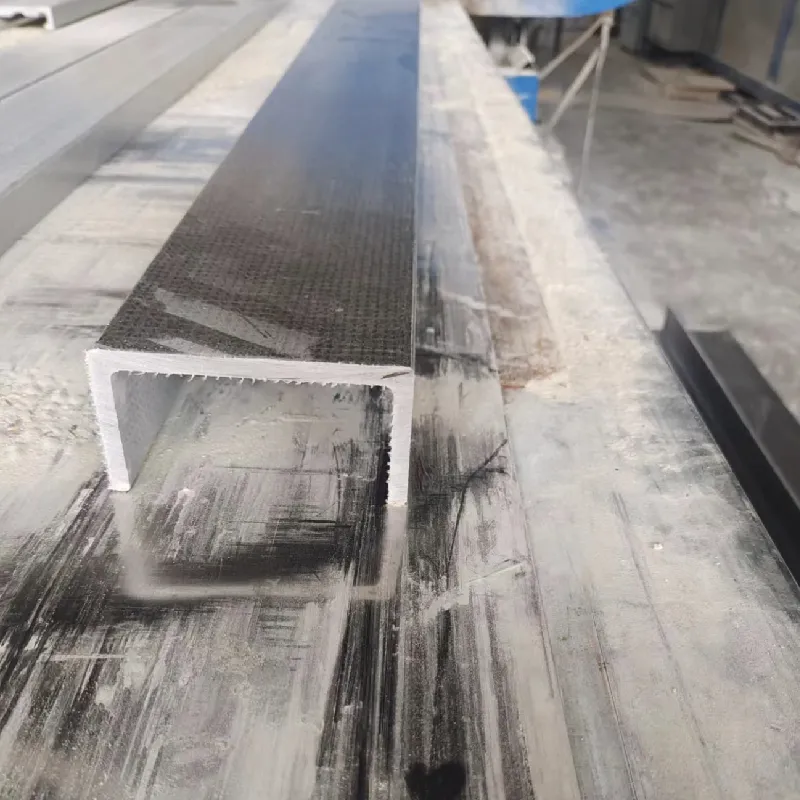loading...
- No. 9, Xingyuan South Street, Dongwaihuan Road, Zaoqiang County, Hengshui, Hebei, China
- admin@zjcomposites.com
- +86 15097380338
- Welcome to visit our website!
Innovative Applications and Benefits of Fiber Reinforced Polymer Rebar in Construction Industry
Fiber Reinforced Polymer Rebar Revolutionizing Construction
In recent years, the construction industry has witnessed a significant evolution in the materials used for structural reinforcement. One of the most promising advancements is the use of Fiber Reinforced Polymer (FRP) rebar. This innovative material is transforming how engineers and architects approach building designs, leading to enhanced durability, reduced weight, and improved resistance to corrosion.
What is FRP Rebar?
Fiber Reinforced Polymer rebar is a composite material that consists of a polymer matrix reinforced with fibers. The types of fibers typically used include glass, carbon, and aramid, each offering unique properties that enhance the performance of the rebar. The polymer matrix, often made from epoxy or polyester, provides excellent binding characteristics and protects the fibers from environmental damage.
The combination of fibers and polymer results in a lightweight, high-strength product that rivals traditional steel rebar. FRP rebar is non-magnetic and offers superior resistance to chemical and environmental factors, making it ideal for various applications, especially in harsh conditions.
Advantages of FRP Rebar
1. Corrosion Resistance Traditional steel rebar is prone to rust and deterioration over time, especially in environments with high moisture, chemicals, or de-icing salts. FRP rebar, however, does not corrode, significantly extending the lifespan of structures in aggressive environments, such as coastal areas and industrial sites.
2. Weight Reduction One of the standout features of FRP rebar is its lightweight nature. It is typically one-fifth the weight of steel rebar, making it easier to handle and install. This reduction in weight can also lead to lower transportation costs and reduced labor expenses during construction.
3. High Strength-to-Weight Ratio Despite its lightweight characteristics, FRP rebar boasts a high tensile strength, allowing it to effectively carry loads comparable to that of steel. This property enables engineers to design slimmer structures without compromising safety or performance.
fiber reinforced polymer rebar

4. Thermal Insulation FRP rebar has low thermal conductivity, which can help reduce heat transfer in concrete structures. This is particularly beneficial in applications where temperature fluctuation can lead to structural stress.
5. Versatility FRP rebar can be manufactured in various diameters and shapes, making it suitable for a range of construction projects, whether they are beams, slabs, or specialized architectural features.
Applications of FRP Rebar
The applications for FRP rebar are extensive. It is being used in bridges, parking garages, waterfront structures, and even nuclear facilities. In areas prone to seismic activity, FRP rebar can provide additional resilience. Furthermore, in regions with a high risk of natural disasters, such as floods or earthquakes, the material’s lightweight and corrosion-resistant properties can contribute significantly to maintaining structural integrity.
Challenges and Considerations
Despite the numerous advantages, the adoption of FRP rebar is not without challenges. The initial cost of FRP rebar is generally higher than that of steel, which can deter some contractors and engineers. Additionally, the construction industry is often slow to adapt to new materials due to established practices and regulations, making it essential for stakeholders to educate themselves on the benefits and potential of FRP rebar.
Furthermore, varying standards for performance and installation in different regions can lead to inconsistencies. However, as technology advances and more successful case studies emerge, it is likely that FRP rebar will gain broader acceptance.
Conclusion
Fiber Reinforced Polymer rebar represents a significant step forward in construction materials, offering unique advantages that address the limitations of traditional steel reinforcement. Its durability, lightweight properties, and resistance to corrosion make it a valuable option for modern construction projects, ensuring that structures built today stand the test of time. As the industry continues to embrace innovation and sustainability, FRP rebar may very well become a standard practice in future construction paradigms.
-
Transform Your Spaces with FRP Grating SolutionsNewsNov.04,2024
-
The Versatility and Strength of FRP RodsNewsNov.04,2024
-
The Excellence of Fiberglass Water TanksNewsNov.04,2024
-
The Benefits of FRP Grating for Your ProjectsNewsNov.04,2024
-
Elevate Your Efficiency with FRP Pressure VesselsNewsNov.04,2024
-
Welcome to the World of FRP Pressure VesselsNewsOct.12,2024
-
Unveiling the Future of Filtration: Why FRP Filter Vessels are a Game ChangerNewsOct.12,2024
